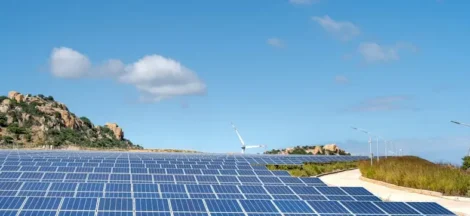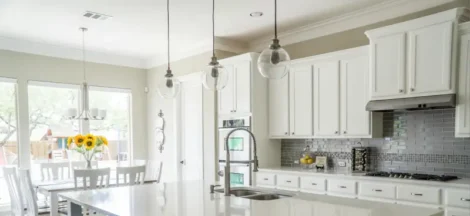Welcome to our comprehensive guide on eco-friendly home renovations, specially tailored for those living in or around the vibrant city of Pittsburgh. Known for its rich history in steel production, Pittsburgh has transformed into a modern, environmentally conscious city. It boasts numerous green spaces and has been consistently working towards sustainable living. This transformation makes Pittsburgh an ideal backdrop for homeowners looking for a renovation checklist to remodel their homes. In this guide, we’ll explore practical and innovative renovation tips for an eco-friendly home that not only benefits the environment but also enhances the comfort and value of your home. Whether you’re just starting your green journey or looking to deepen your commitment to sustainability, these tips are designed to help you create a more eco-friendly living space.
Energy-Efficient Windows and Doors
Installing energy-efficient windows and doors is a crucial step in eco-friendly home renovation. These features are designed to provide better insulation, thus maintaining the temperature inside your home more effectively. This reduces the need for constant heating or cooling, which in turn lowers energy consumption and utility bills. When choosing windows and doors, consider factors such as the U-factor (which measures the window’s insulation properties), Solar Heat Gain Coefficient (SHGC), and the quality of the window frames. Additionally, proper installation is key to ensuring these windows and doors function as intended, so consider hiring a professional for the best results.
Roof Repair or Replacement
Proper roofing is essential for protecting a home, so you should look into either replacing or repairing your worn-out roof. When it comes to roofing renovations in Pittsburgh, it’s beneficial to search online with the keyword Pittsburgh Roof Replacement experts near me to find professionals like EAS Roofing who specialize in sustainable roofing options. These experts can recommend options like cool roofs, which reflect more sunlight and absorb less heat, reducing the need for air conditioning. Another option is green roofing, which involves growing vegetation on rooftops, providing insulation, reducing stormwater runoff, and improving air quality.
Solar Panel Installation
Solar panel installation is an excellent way to reduce your home’s carbon footprint. In Pittsburgh, where the city is increasingly supporting renewable energy initiatives, solar panels can be a great investment. They not only provide clean energy but can also increase your property’s value. While the initial investment might seem high, the long-term savings on energy bills and potential tax incentives make it a worthwhile investment. Consider consulting with local solar panel providers to get a system that is tailored to your home’s specific needs and orientation.
Use Sustainable Building Materials
Choosing sustainable building materials is not just about being environmentally conscious; it’s also about creating a healthier living space. Sustainable materials such as bamboo are not only rapidly renewable but also offer durability and resistance to moisture and insects, making them ideal for flooring. Reclaimed wood, another excellent choice, brings unique history and character to your home while reducing the demand for new timber. When selecting paints and finishes, opt for those with low environmental impact and try to source materials locally to reduce transportation-related emissions.
On-Budget Home Renovation Ideas for Students
Water Conservation Systems
Water conservation is increasingly important in today’s world. Systems like rainwater harvesting involve collecting rainwater from rooftops, which can then be used for gardening, flushing toilets, or even washing clothes. This not only reduces your water bill but also lessens the strain on municipal water supply systems. Greywater systems, which recycle water from showers, sinks, and washing machines, can also be installed. These systems are particularly useful in areas prone to drought or where water conservation is a priority.
Eco-Friendly Insulation
Eco-friendly insulation is a key component in creating an energy-efficient home. Options like sheep’s wool, recycled denim, and cellulose are not only sustainable but also provide excellent thermal and acoustic insulation. Sheep’s wool, for instance, is naturally fire-resistant and can help regulate humidity levels inside the home. Recycled denim, made from post-consumer jean material, is a great way to reuse resources and provides effective insulation. Cellulose, often made from recycled paper, is another eco-friendly option that can be easily blown into walls and attics, providing a high level of insulation. When upgrading insulation, it’s also important to seal any air leaks around the house, as this will further improve energy efficiency.
Smart Home Technology
Integrating smart home technology can significantly enhance the eco-friendliness of your home. Smart thermostats, for example, learn your schedule and adjust heating and cooling accordingly, ensuring energy is not wasted when no one is home. Similarly, energy-efficient lighting systems, such as LED lights controlled by motion sensors or timers, can drastically reduce electricity usage. Automated blinds can optimize natural light and provide insulation, further conserving energy.
Additionally, smart home systems often come with monitoring capabilities, allowing you to track your energy usage in real-time and make adjustments to improve efficiency. Investing in these technologies can lead to substantial savings on utility bills and a smaller environmental footprint.
Low-VOC Paints and Finishes
Using low-VOC paints and finishes is crucial in minimizing indoor air pollution. Volatile Organic Compounds, commonly found in traditional paints, can have long-term health impacts and are also detrimental to the environment. Low-VOC paints improve indoor air quality and are less harmful to the ozone layer. They are now widely available in a variety of colors and finishes, making them a practical choice for any renovation project. Additionally, many low-VOC paints are made with natural ingredients, further reducing their environmental impact.
Native Landscaping
Native landscaping involves using plants that are indigenous to the area. This type of landscaping is not only aesthetically pleasing but also environmentally beneficial. Native plants are those that have adapted to the local weather and soil conditions, requiring less upkeep in terms of the amount of fertilizer, water, and insecticides. This reduces your garden’s environmental impact and supports local ecosystems and wildlife.
Additionally, native plants typically require less maintenance, saving time and resources. Incorporating features like rain gardens and permeable paving can further enhance the sustainability of your outdoor space.
Energy-Efficient Appliances
Finally, upgrading to energy-efficient appliances is a key step in creating an eco-friendly home. Appliances with the ENERGY STAR label have been certified to use less energy and water, reducing both your utility bills and environmental impact. When selecting appliances, consider their size and functionality to ensure they meet your needs without excess energy consumption. Modern energy-efficient appliances also often come with smart features, allowing for better control and further energy savings.
Conclusion
Transforming your home into an eco-friendly haven is a rewarding journey. By implementing these tips, you not only contribute to a healthier planet but also enjoy a more efficient, cost-effective, and comfortable living space. Remember, every small step towards sustainability makes a big difference. Start your eco-friendly home renovation today and join Pittsburgh’s growing community of environmentally conscious homeowners.





 NonSurgical Solutions for Pain
NonSurgical Solutions for Pain